A Rare Brass Clad ‘Permanent’ Head Piece
A Rare Brass Clad ‘Permanent’ Head Piece
Brass, Human Hair, Pigment
Latuka, Southern Sudan
19th Century
SIZE: 20cm high, 16.5cm wide, 25cm deep - 7¾ ins high, 6½ ins wide, 9¾ ins deep
Brass, Human Hair, Pigment
Latuka, Southern Sudan
19th Century
SIZE: 20cm high, 16.5cm wide, 25cm deep - 7¾ ins high, 6½ ins wide, 9¾ ins deep
A Rare Brass Clad ‘Permanent’ Head Piece
Brass, Human Hair, Pigment
Latuka, Southern Sudan
19th Century
SIZE: 20cm high, 16.5cm wide, 25cm deep - 7¾ ins high, 6½ ins wide, 9¾ ins deep
Brass, Human Hair, Pigment
Latuka, Southern Sudan
19th Century
SIZE: 20cm high, 16.5cm wide, 25cm deep - 7¾ ins high, 6½ ins wide, 9¾ ins deep
Anthony ‘Toby’ Jack wrote the following extract in the 1990’s:
‘Sir Samuel Baker, who explored the Bahr-el-Jebel region of southern Sudan in 1863 comments: ‘The Latookas wear most exquisite helmets: all of them are formed of their own hair, and are of course fixtures. At first sight it appears incredible, but a minute examination shows the wonderful perseverance of years in producing what must be highly inconvenient’.
Seligmann (The Southern Sudan), writes: ‘Perhaps the most distinctive feature about the Latuka is their peculiar and elaborate style of hairdressing….. all form the hair into a sort of helmet, which takes several years to bring to perfection. Their thick woolly hair is interwoven with fine twine until it resembles a thick felt mat, and as the hair grows it is submitted to the same process until it becomes more a compact mass about an inch and a half thick, which has been trained into the shape of a helmet. The edge is sewn together with thread, and forms a strong rim about two inches deep’. Strips of polished brass or copper, ‘shaped like the half of a bishop’s mitre, and about a foot in length’ are set up to form a crest. Seligmann illustrates his article with a rare photograph by Major Jennings Bramley showing a Latuka with a head-piece the same as the present example.
Like the Bongo of Bahr-el-Ghazal, the Latuka of Bahr-el-Jebel were already suffering from slave raids from the north in the mid-nineteenth century, and it is only by chance that some aspects of their material culture were recorded in those times. By the end of the century, and the ‘Mahdist’ State, they were amongst the many tribes almost driven to the brink of extinction.
‘Sir Samuel Baker, who explored the Bahr-el-Jebel region of southern Sudan in 1863 comments: ‘The Latookas wear most exquisite helmets: all of them are formed of their own hair, and are of course fixtures. At first sight it appears incredible, but a minute examination shows the wonderful perseverance of years in producing what must be highly inconvenient’.
Seligmann (The Southern Sudan), writes: ‘Perhaps the most distinctive feature about the Latuka is their peculiar and elaborate style of hairdressing….. all form the hair into a sort of helmet, which takes several years to bring to perfection. Their thick woolly hair is interwoven with fine twine until it resembles a thick felt mat, and as the hair grows it is submitted to the same process until it becomes more a compact mass about an inch and a half thick, which has been trained into the shape of a helmet. The edge is sewn together with thread, and forms a strong rim about two inches deep’. Strips of polished brass or copper, ‘shaped like the half of a bishop’s mitre, and about a foot in length’ are set up to form a crest. Seligmann illustrates his article with a rare photograph by Major Jennings Bramley showing a Latuka with a head-piece the same as the present example.
Like the Bongo of Bahr-el-Ghazal, the Latuka of Bahr-el-Jebel were already suffering from slave raids from the north in the mid-nineteenth century, and it is only by chance that some aspects of their material culture were recorded in those times. By the end of the century, and the ‘Mahdist’ State, they were amongst the many tribes almost driven to the brink of extinction.
Ex Private English collection
cf: An identical head-piece, with the addition of a stick decorated with feathers on top, is illustrated in W.O. Oldman’s Catalogue of Ethnographical Specimens no.77 (1910)
cf: An identical head-piece, with the addition of a stick decorated with feathers on top, is illustrated in W.O. Oldman’s Catalogue of Ethnographical Specimens no.77 (1910)
A Rare Brass Clad ‘Permanent’ Head Piece
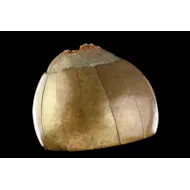
SOLD
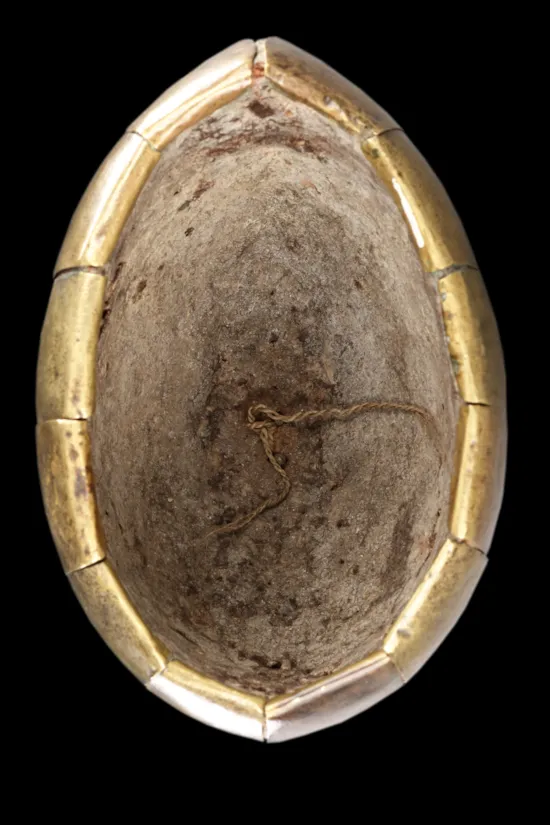
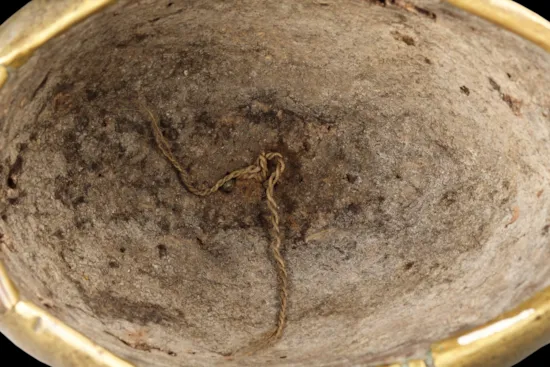
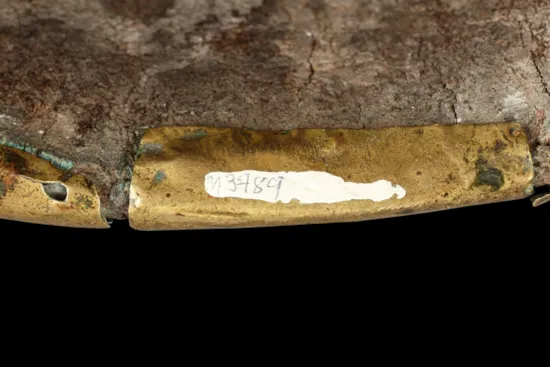
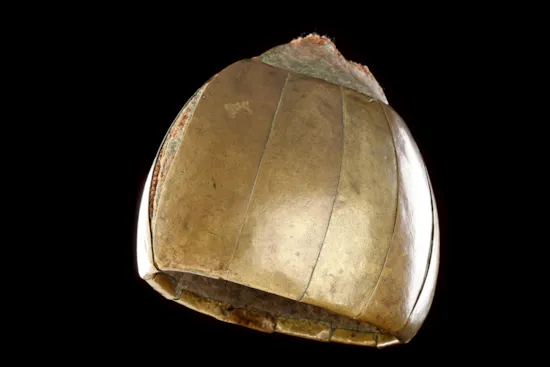
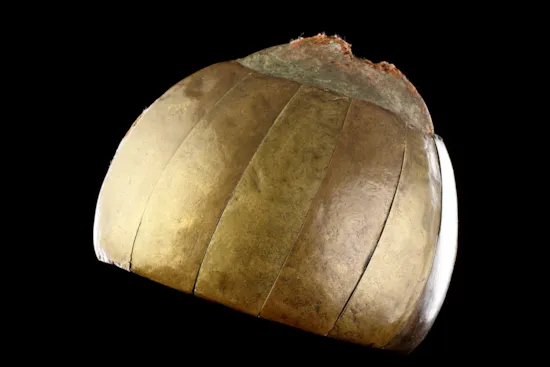
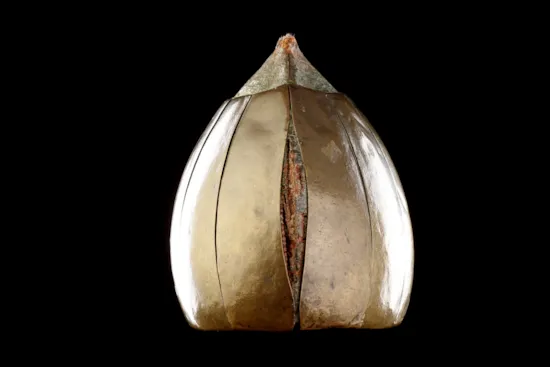
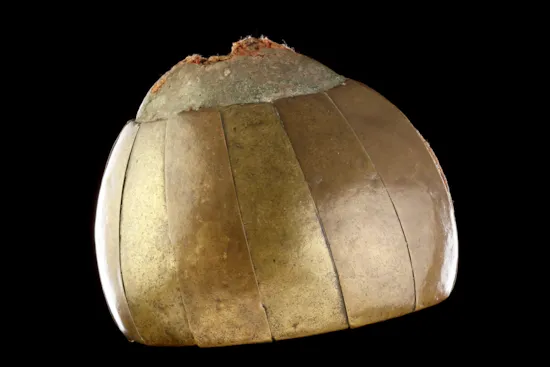

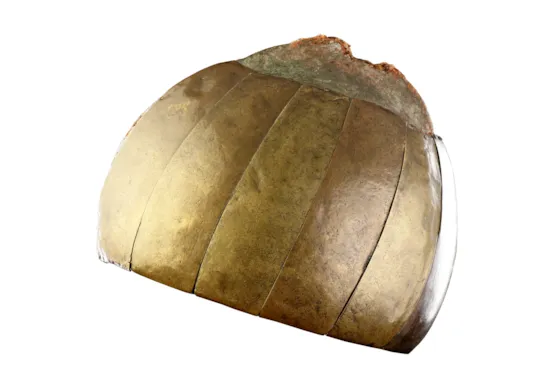
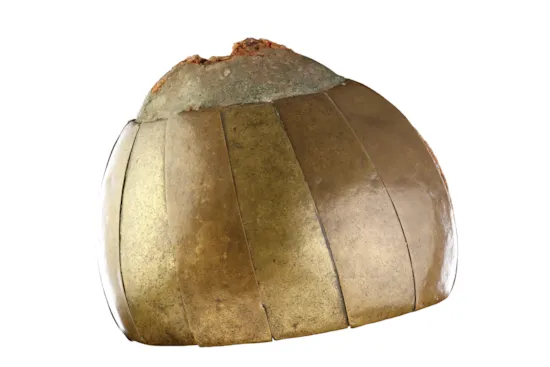
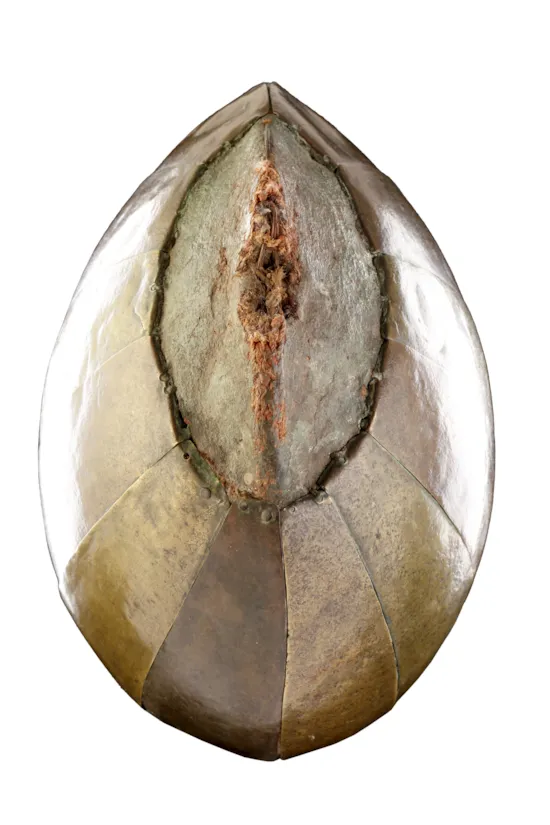











YOU MAY ALSO LIKE

